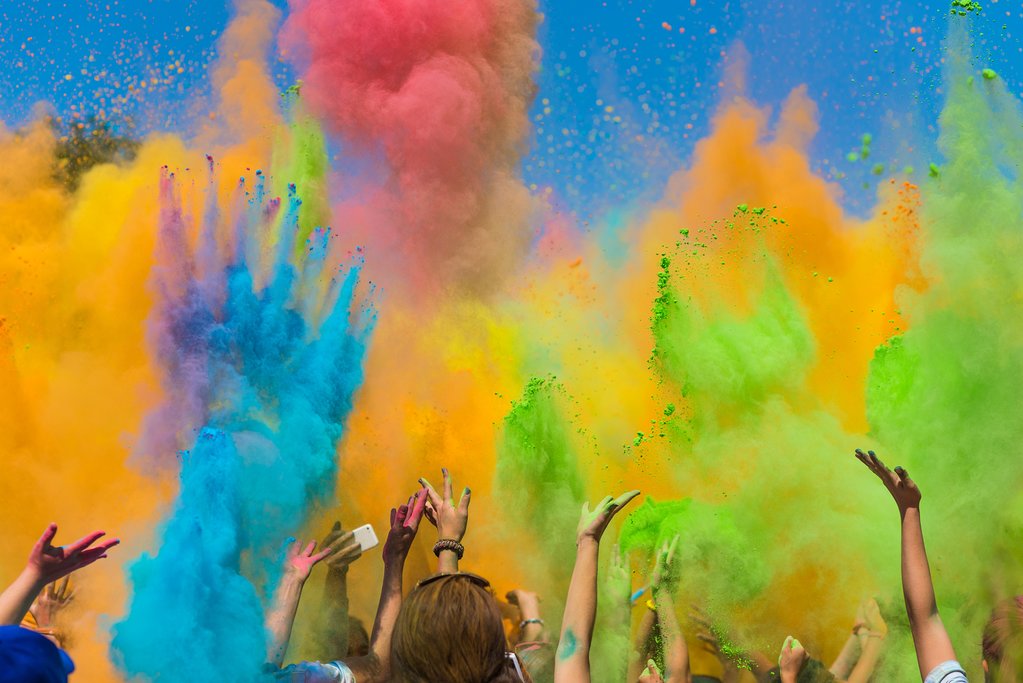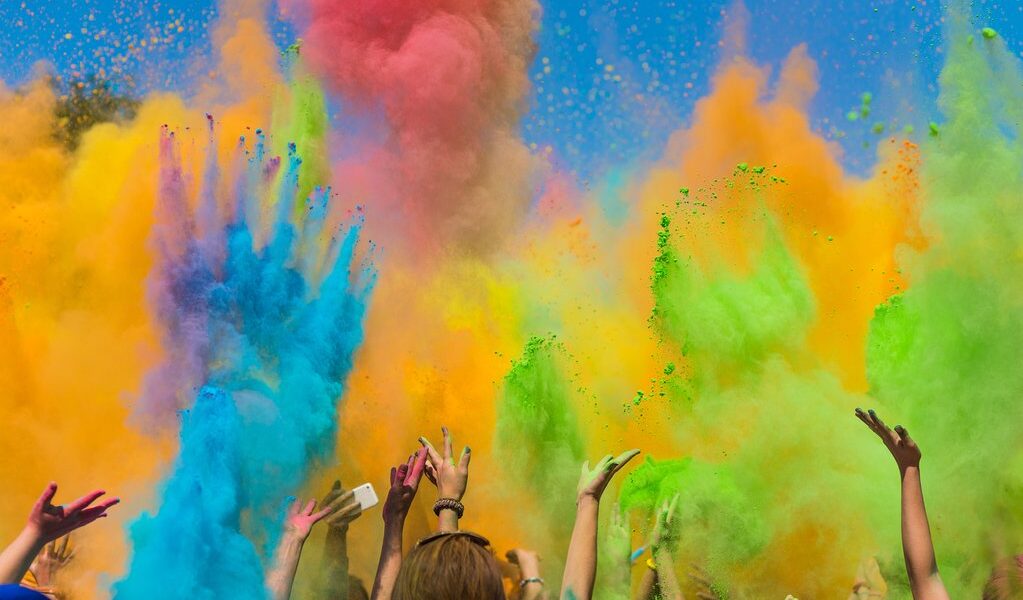
Lively and rowdy even during its quietest times, India is home to hundreds if not thousands of color-packed festivals, from chilled out arts and music meets and hipster-focused fare to frenzied religious rituals and costumed spiritual processions. You’d need several lifetimes to see them all, but that shouldn’t stop you from trying.
Here’s a detailed exploration of India’s vibrant festival scene, a country renowned for its enthusiastic embrace of celebrations. Navigating the sheer volume of festivals can be daunting, but understanding the key events provides a fascinating glimpse into the nation’s diverse cultural and religious landscape. While most religious holidays are observed nationwide, a multitude of unique festivals flourish in specific regions, adding to the country’s rich tapestry of traditions. Remember that dates shift annually based on lunar and solar calendars, so verifying the precise dates for the year you plan to travel is crucial for accurate itinerary planning.
**Religious Festivals: A Tapestry of Faith and Devotion**
The vibrant post-monsoon festival season commences with **Navratri**, a significant Hindu holiday stretching over nine nights. Each night is dedicated to celebrating a different incarnation of the *devi*, the Supreme Goddess, representing the multifaceted nature of divine feminine power. In the eastern region, particularly for Bengalis, this same period is celebrated as **Durga Puja**, honoring Durga, one of the most powerful and revered forms of the *devi*. Durga is traditionally depicted seated majestically on a tiger, symbolizing her strength and dominion over evil. The artistic skill involved in crafting the idols of Durga is truly remarkable, with craftsmen creating glittering and elaborate statues that are later ceremoniously submerged in the nearest river. These idols provide spectacular viewing opportunities before their immersion, showcasing the artistic devotion and cultural significance of the festival. While **Durga Puja** is a national event, some of the grandest celebrations are held in Kolkata, Varanasi, and Delhi, offering immersive experiences into the heart of the festivities.
Another essential cultural experience not to be missed is the *Ramlila*, a folk theater reenactment of *The Ramayana*, the ancient Sanskrit epic poem. This tradition, recognized by UNESCO as part of its intangible cultural heritage since 2008, brings the epic tale to life through vibrant performances. While larger-scale productions, such as those in Delhi’s Old City, often feature Bollywood stars in prominent roles, smaller, neighborhood-based productions offer a more intimate and authentic experience. Exploring local communities and inquiring about the best show is a worthwhile endeavor. The *Ramlila* performances reach their climax at the end of Navratri with **Dussehera**. During this celebration, performers ignite towering effigies of Ravana, the ten-headed demon who serves as the antagonist in the Ramayana, symbolizing the triumph of good over evil.
As autumn deepens, the festivities continue with **Diwali**, the largest and most important holiday in India. Also known as the “Festival of Lights,” this five-day celebration commemorates the return of Ram, the hero of *The Ramayana*, after over a decade of exile. Diwali promises a magical, albeit often noisy, experience. Homes and streets are adorned with dozens of *diyas*, traditional clay oil candles, creating a mesmerizing spectacle of light. The skies explode in dazzling displays of fireworks, contributing to the festive atmosphere (although those with respiratory sensitivities should take precautions). The main celebration day of **Lakshmi Puja** is dedicated to inviting the goddess of wealth and fortune, Lakshmi, into homes. Families draw trails of footsteps outside their doors, symbolizing the welcoming of prosperity and good fortune. Prayers are performed within the home, and visitors may be fortunate enough to join a family for these intimate celebrations. Sikhs also celebrate **Bandi Chhor Divas** concurrently with Diwali, commemorating the release of the sixth Sikh guru from imprisonment under the Mughal Empire.
While the aforementioned festivals are predominantly celebrated in North India, the southern regions and Mumbai become the primary venues for **Ganesh Chaturthi**. This festival honors Ganesh, the beloved elephant-headed god known for his wisdom, prosperity, and fondness for sweets, at the end of the summer season. Grand processions featuring giant clay statues of Ganesh fill the streets, and the generous consumption of sticky sweets is a hallmark of the festivities. Seeking out a *pandal*, a temporary viewing shelter erected to house the idols, is highly recommended. Be prepared for long lines, however, as devotees flock to pay their respects. The famed Lalbaugcha Raja in Mumbai, established in the 1930s, attracts an astounding one and a half million devotees daily for Ganesh *darshan*, the act of beholding the deity.
As spring approaches, **Shivaratri** marks a time of fervent devotion to Shiva. Devotees engage in chanting throughout the night, celebrating the fearsome, three-eyed god (Ganesh’s father, and often associated with the use of cannabis) by consuming *bhang*, a syrupy cannabis drink. Visiting the nearest Shiva temple at any hour provides an opportunity to join the faithful in their recitations of mantras. Kashi Vishwanath, a prominent temple situated on the banks of the Ganges in Varanasi, also known as the City of Shiva, is renowned for its particularly lively Shivaratri festivities. In certain regions, it’s even possible to obtain marijuana leaves as *prasadam*, a religious offering. However, moderation is advised, as while intoxication may be culturally accepted, the underlying purpose is spiritual devotion.
The arrival of spring is officially welcomed with **Holi**, India’s exuberant “Festival of Colors.” Revelers gleefully drench each other with handfuls of colored powder and dye-filled buckets and water guns, creating a vibrant and chaotic spectacle. The pilgrimage towns of Vrindhavan and Mathura, located near Agra in the northern state of Uttar Pradesh, are renowned for hosting the most fervent and immersive Holi celebrations. Experiencing Holi in these locations is unforgettable, but it’s important to be prepared for a lively and potentially overwhelming experience. Participants should be prepared for intense throngs of color, and women should exercise caution due to the spirited nature of the festivities.
India’s diverse religious landscape also includes significant festivals from other faiths. **Eid-ul-Fitr** marks the joyous conclusion of Ramadan, with countless worshippers congregating at shrines to offer prayers and celebrate with special sweet dishes and brightly colored new clothes. The **Losar Festival** celebrates the Tibetan and Ladakhi New Year with cultural performances, traditional mask dances, and vibrant processions. These festivities can be experienced in Buddhist regions such as Leh, Tawang, and Lahaul and Spiti, adding further depth and richness to India’s cultural heritage.
**Arts, Music, and Literature Festivals: A Celebration of Creativity**
India offers the unique opportunity to combine cultural enrichment with a relaxing beach getaway. The **Kochi Biennale**, established in 2010 in the seaside state of Kerala, has rapidly gained international recognition, rivaling even Venice with its high-caliber program. The Biennale features gallery shows, installations, workshops, and seminars dedicated to showcasing contemporary artists from around the world. During the winter months, Goa hosts the **Serendipity Arts Festival**, a multi-disciplinary event celebrating contemporary photography, dance, cuisine, and theater. This festival brings together talented performers and practitioners from both India and abroad, providing a platform for creative exchange and artistic innovation.
The **Rajasthan International Folk Festival**, held within the walls of a 15th-century fort in the blue city of Jodphur, presents over 250 musical acts from around the globe, showcasing the rich diversity of folk music traditions. For those with a passion for literature, the **Jaipur Literature Festival**, founded in 2006, draws globally renowned authors such as Pico Iyer, Vikram Seth, Orhan Pamuk, and Oprah Winfrey to the sun-drenched Rajasthani capital each January. The festival offers free access to debates on books and current events. However, the large crowds, especially on weekends, should be anticipated.
For a truly unique musical experience, the **Ziro Festival of Music** is a must-attend. This outdoor festival features a lineup of indie performers in the remote and enchanting Ziro Valley, a stronghold of the Apatani tribal community in the northeastern state of Arunachal Pradesh. Embracing adventure is key, as the festival doesn’t offer standard amenities. The nearest airport is located a full state away, and most concert-goers opt for camping. To combat the cool nights, attendees often share bamboo mugs of *apong*, a local rice beer.
**Traditional Cultural Festivals: A Glimpse into India’s Heritage**
In Kerala, the Hindu festival of **Onam**, celebrated at the conclusion of the monsoon season, showcases the region’s rich cultural heritage. Key attractions include *Vallam Kali*, thrilling water races featuring long, pirate-worthy snake boats, and *Puli Kali*, a captivating folk dance where performers don masks and paint their bodies to resemble vibrant, snarling tigers, creating unbeatably photogenic moments. Neighboring Tamil Nadu celebrates **Pongal**, a four-day harvest festival observed at the beginning of the new year. The festival is characterized by an array of sweet dishes and intricate *kolam* designs, which are colorful drawings made from rice flour in front of houses. Workshops offering instruction in *kolam*-making are available in Pondicherry for those who wish to enhance their skills.
Nagaland, a state known for its diverse tribal cultures, invites visitors to experience its traditions firsthand. While the obsolete practice of headhunting may be part of its history, Naga tribes have much more to offer. The popular **Hornbill Festival** (December 1-10), named after the distinctive banana-beaked bird, brings together members of the state’s 16 official tribal communities. The festival showcases impressive crafts, magnificent attire, and traditional music, offering a fascinating glimpse into the unique cultures of Nagaland.
In Punjab, the **Basant Kite Festival**, held in late winter, marks the arrival of spring. Participants dress in yellow, the color associated with the season, and launch kites into the sky. However, participants should be cautious, as kite strings are often coated with glass, transforming kite-flying into a competitive and potentially dangerous sport. For dedicated kite enthusiasts, the **International Kite Festival** (January 10) in Gujarat is a must-see. This festival attracts an impressive 10 million visitors who come to admire the sublime airborne designs and witness the artistry of kite-flying from around the world.
Finally, the **Pushkar Camel Fair**, a vibrant two-week desert *mela* (Hindu festival) held annually in November in the sandy landscapes of Rajasthan, is deservedly a top attraction on any list of India must-sees. Coinciding with a full moon festival, the livestock trading fair, overlooking the serene and glassy lake of Pushkar, also hosts cultural and sporting events. However, the primary draw remains the long-lashed, four-legged camels, adding to the fair’s distinctive character.

